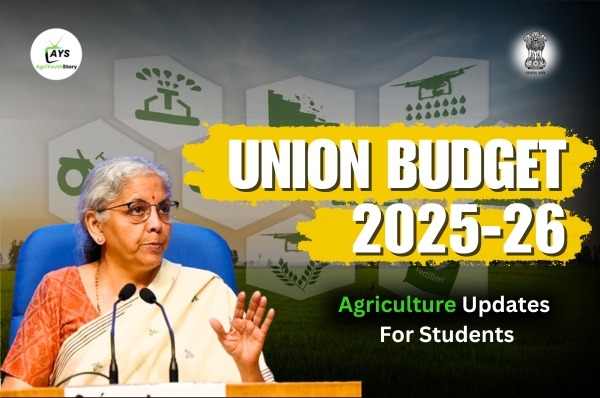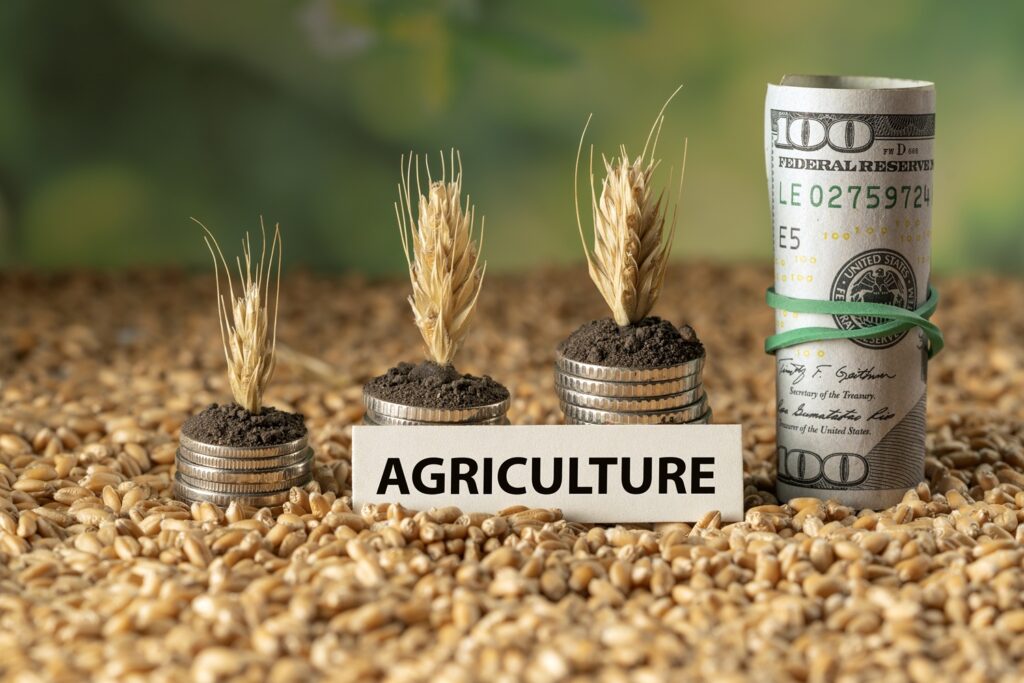


Agriculture Union Budget: 2025-26

- By Jitesh Bisht
- (0) comments
- April 4, 2025
Agriculture Union Budget: 2025-26
An annual budget is a financial documentation of the central government which presents its spending and revenue collection for the upcoming financial year. It generally comes with the allocation funds to various sectors like education, medical, agriculture, defence, infrastructure and social services. It aims to achieve nation’s needs and economic goals. It is prepared by government officials and reviewed by lawmakers of the country
Finance Minister Nirmala Sitharaman presents the Union Budget for the year 2025-26 on Feb 01, 2025. It has a comprehensive plan to boost India’s agricultural sector, focusing on sustainability, self-reliance, and innovation. A total of 1,71,437 Rs. has been allocated to the Agri sector.
In this blog, we have gathered some important highlights revitalizing India’s agricultural sector: key highlights from the union budget 2025-26.
Prime Minister Dhan-Dhaanya Krishi Yojana: A Vision for Rural Transformation
•This new initiative titled as the Prime Minister Dhan-Dhaanya Krishi Yojana. It will focus on transforming the Agri-sector of around 100 districts showing low productivity. This scheme has a target of 1.7 crore farmers to make them benefitted.
•It improves irrigation facilities, introduce sustainable farming techniques, and improve post-harvest storage infrastructure. Also, program aims to boost crop diversification, reduce dependence on a few staple crops, and improve farmers’ income by offering high-value crop alternatives.
• Highlights:
Enhance irrigation systems
Promote climate-resilient crop varieties
Improve post-harvest storage and value chains
Diversify crop patterns for better economic return.
Mission for Aatmanirbharta in Pulses: Reducing Reliance on Imports
•This is another program launched to reduce India’s dependency on pulse imports. This enhances cultivation of key pulses like Tur, Urad, and Masoor, with the government pledging substantial support to farmers.
• The mission aims to have an impact on domestic production and enhances processing capabilities with stabilization of prices in the local markets. Under this program government allocates Rs.1,000 crores in it.
• Highlights:
Increase domestic production of pulses
Set up farmer-friendly procurement systems
Reduce the country’s reliance on international imports
Stabilize domestic prices and improve farmers’ incomes

Comprehensive Programme for Vegetables and Fruits: Reducing Losses
• This budget brings an attention towards fruits and vegetables also by launching the mission to improve the production, marketing, and processing of fruits and vegetables across India.
• It focusses on creating a better management for supply chain and post-harvest management practices. Also, promotes sustainable farming practices, improve cold storage facilities and better logistic services.
• Highlights:
Improve storage infrastructure and reduce spoilage
Enhance farmers’ access to competitive markets
Facilitate food processing to boost shelf-life and value addition
Ensure higher nutritional value in diets through increased fruit and vegetable consumption
Comprehensive Programme for Vegetables and Fruits: Reducing Losses
• This budget brings an attention towards fruits and vegetables also by launching the mission to improve the production, marketing, and processing of fruits and vegetables across India.
• It focusses on creating a better management for supply chain and post-harvest management practices. Also, promotes sustainable farming practices, improve cold storage facilities and better logistic services.
• Highlights:
Improve storage infrastructure and reduce spoilage
Enhance farmers’ access to competitive markets
Facilitate food processing to boost shelf-life and value addition
Ensure higher nutritional value in diets through increased fruit and vegetable consumption.
Makhana Board for Bihar: Promoting Regional Agricultural Excellence
• For a region specific, a Makhana Board in Bihar has been established for the promotion of production, processing, and export of Makhana (fox nuts). It is meant for the fact that Bihar is the largest producer of Makhana in India.
• This program focusses on providing the farmers with access to technology, better market linkages and innovative processing techniques.
• Highlights:
Improve Makhana cultivation and productivity
Facilitate processing infrastructure and market expansion
Increase farmer awareness about new techniques and innovations in Makhana farming.

National Mission on High Yielding Seeds: Ensuring Crop Resilience and Productivity
• This mission is to address the challenges posed by diminishing arable land and unpredictable weather patterns. This will lead to promote the production of high yielding seed varieties for the diverse conditions.
• Main aim of the program is to promote research on the drought-resistant, pest-resistant, and climate-resilient seed.
• Highlights:
Development and distribution of high-yielding, climate-resilient seeds
Collaboration with research institutions for innovation
Supporting small and marginal farmers with seed subsidy programs.
Enhanced Credit Facilities for Farmers and Allied Sectors
• For the finance support, this union budget has proposed a significant increase in credit facilities. The Agricultural Credit Target has been raised to ₹5 lakh crore for the year, with a special focus on dairy farmers, fishermen, and women entrepreneurs in agriculture.
• Also, interest subvention schemes will continue to help farmers. It will help them to access working capital and investment for modernizing their operations and improving productivity.
• Highlights:
₹5 lakh crore credit target for farmers
Support for dairy, fisheries, and agribusinesses
Financial aid for women farmers and rural entrepreneurs
Reduced loan interest rates and subsidy schemes.

Tax Reforms and Incentives for Agricultural Innovation
• This involves the exemptions of the tax and concessions to encourage innovations in the Agri sector. These involve tax breaks for the domestic manufacturing of agricultural machinery, solar-powered farming equipment, and organic fertilizers.
• Also, Basic Customs Duty (BCD) on parts used in solar cells will be exempted, encouraging the adoption of green technologies in agriculture.
• Highlights:
Tax exemptions for solar-powered farming equipment
Concessions for producing organic fertilizers domestically
Encouragement for Agri-tech startups and innovation in rural areas
Modifications in the KCC scheme
• The loan limit under the KCC scheme has been increased from 3 lakh Rs. To 5 lakh Rs. This will provide farmers with access to more credit, enabling them to invest in modern farming practices and improve their productivity.
• This improvement to the KCC scheme is expected to benefit around 1.7 crore farmers, providing them with better access to credit and financial resources.
Conclusion: A Balanced Approach to Agricultural Growth
Union Budget 2025-26 brings out an ambitious map to ensure the country’s agricultural growth. It is not only for food security as well as focuses on the upliftment of economic growth in rural areas. This shows the commitment of the government towards sustainability, technological growth, and a self-sustained system. The efforts help address the challenges posed by climate change and market prices.


Content Writer